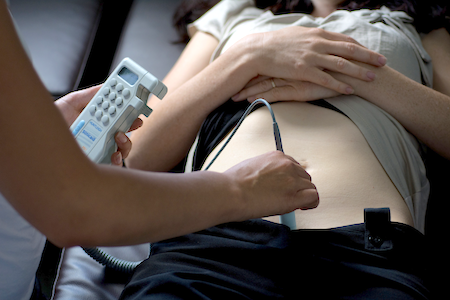
Fetal dopplers: what you need to know
A fetal doppler is a hand-held, pocket-sized device used to listen to Baby’s heartbeat. The Doppler effect changes the frequency of a sound wave relative to its location, and it is utilized here to amplify the sound of Baby’s heartbeat. It is similar to a stethoscope, but multiple people can hear the output. Fetal dopplers can be used by medical professionals and some models are appropriate for use at home.
How does it work?
You can place the probe on your abdomen, lubricated with ultrasound gel. The sound waves emitted from the probe intersect movement from Baby’s heartbeat and the device translates the movement into waves projected back to an amplifier. Sometimes it can be hard to distinguish Baby’s heartbeat from other sounds the fetal doppler picks up, such as blood flow or air movement.
Is it safe?
As long as you don’t use a fetal doppler too often, the device should be perfectly safe. Limit your use to once every other day for about 5 minutes. Fetal dopplers carry the same risks ultrasounds do, like excessive thermal and physical pressure on Baby, so you can talk to your healthcare provider about specific models if you’re concerned. They are easy to rent or buy online, so do some research to ensure that yours is FDA approved. Don’t start using a fetal doppler until 13 weeks.
Fetal dopplers offer a way to connect with Baby outside of the exam room, but remember that the technology is powerful and the device should not be overused. Your healthcare provider can advise you to rent or purchase one that is appropriate for you and Baby.
Read more
Sources
- "Fetal ultrasound: What you can expect." Mayo Clinic. Mayo Clinic, 9/19/2015. Web.




